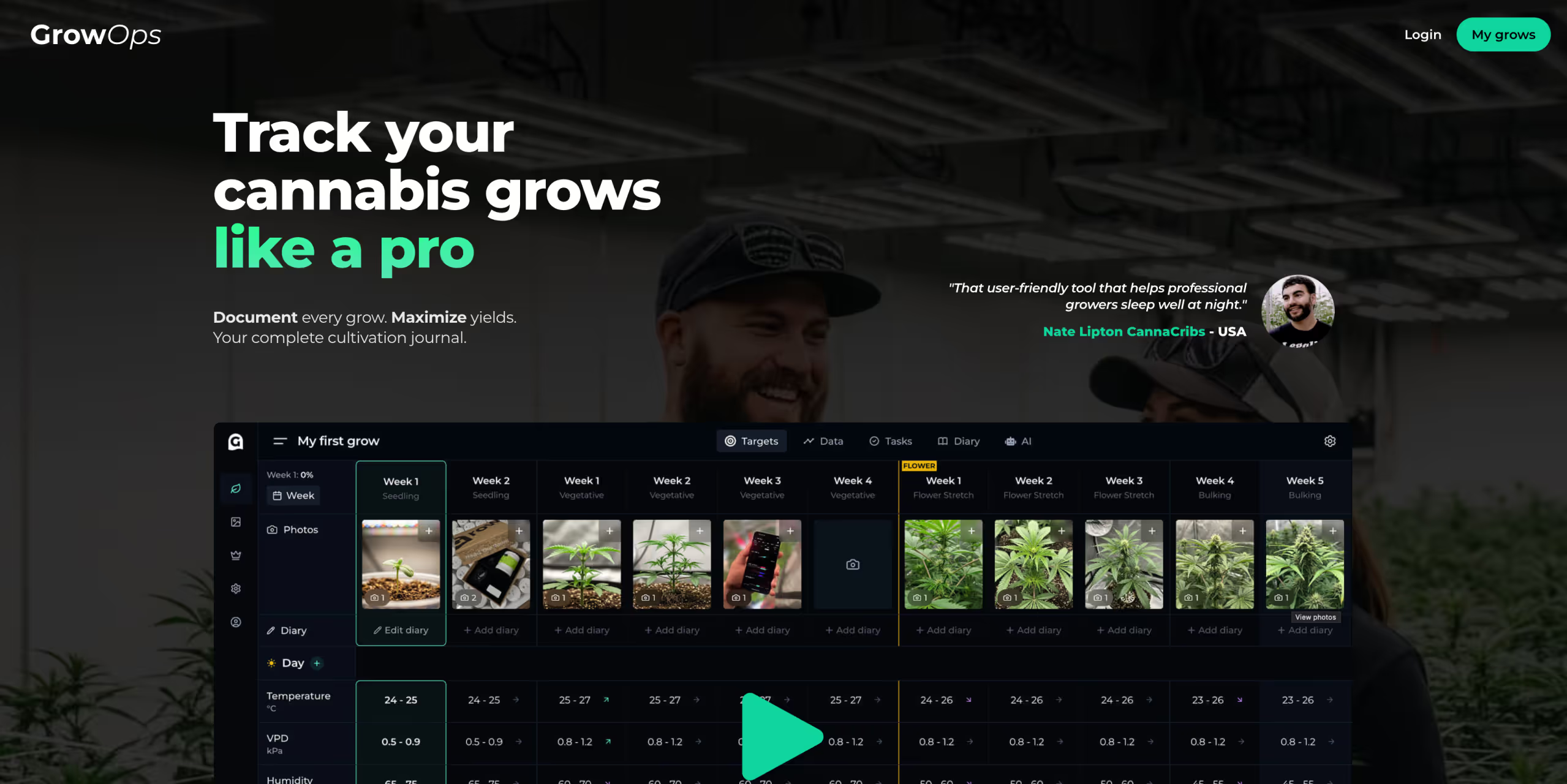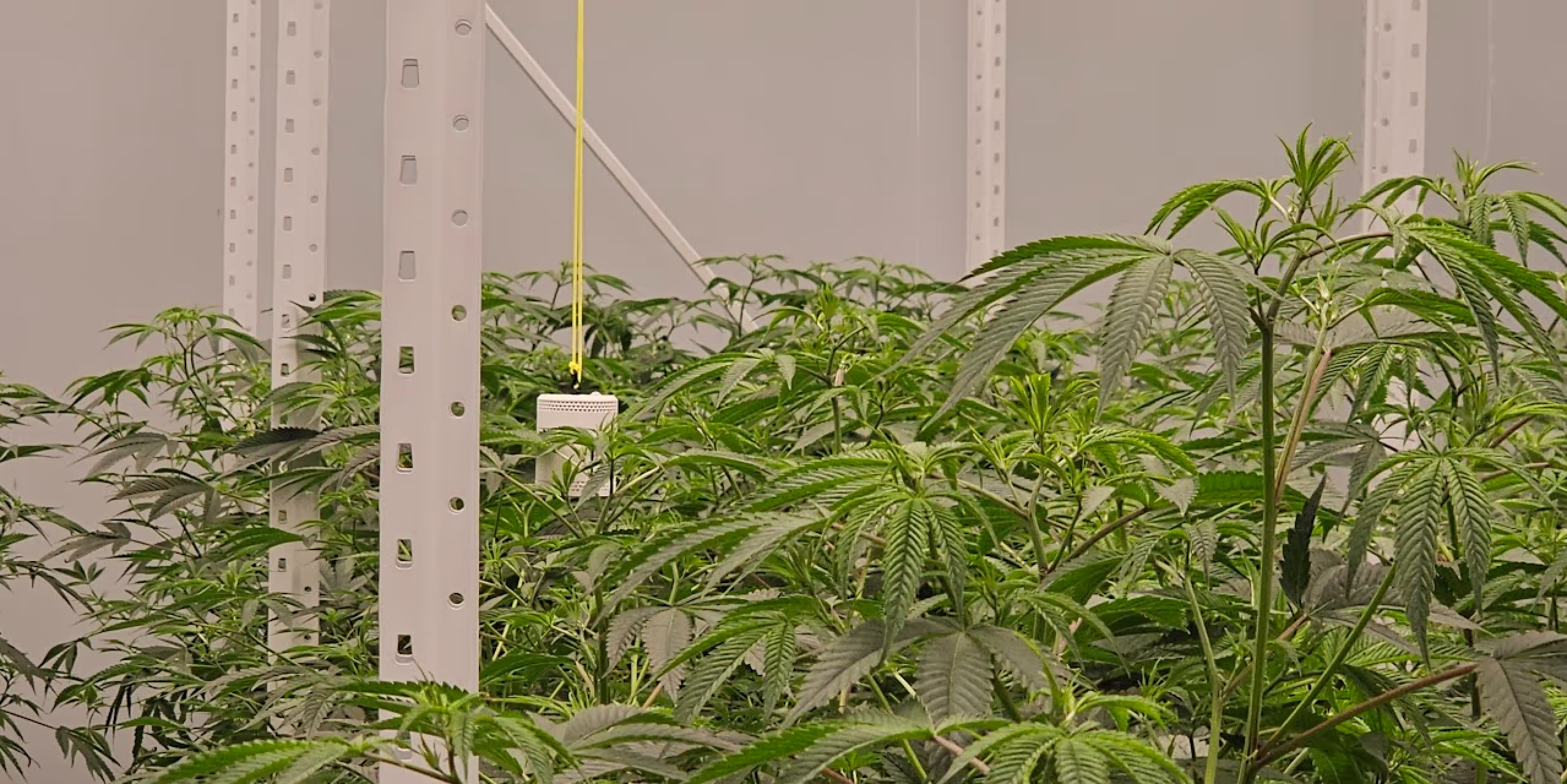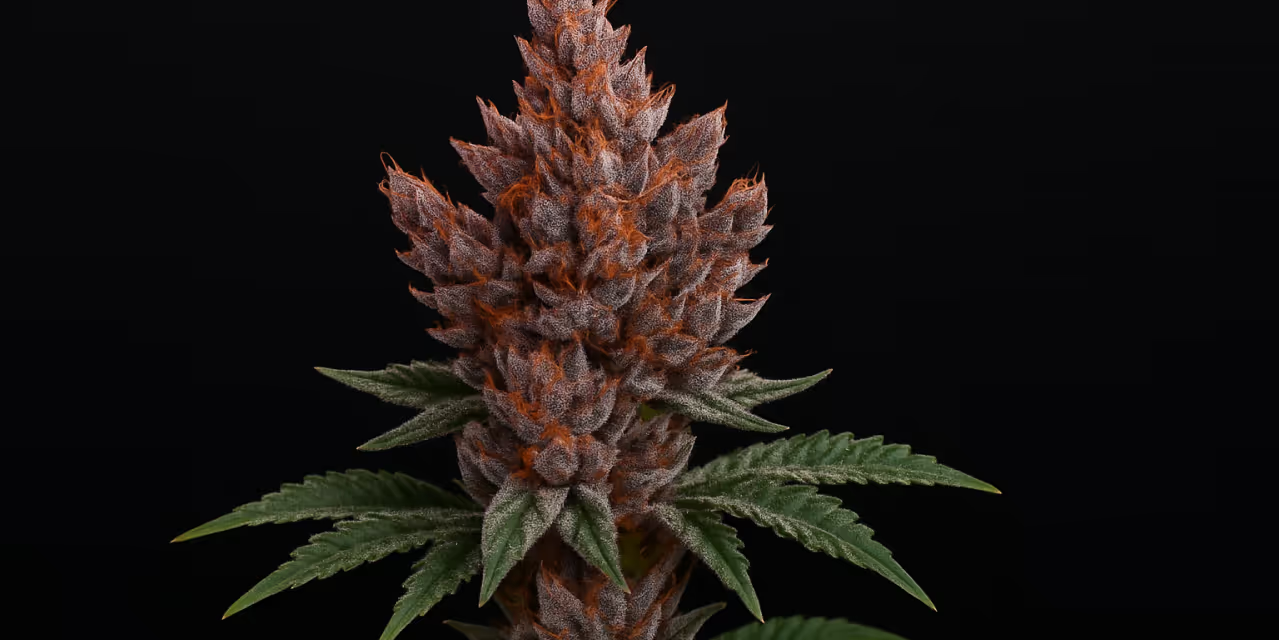Topping cannabis: Uncover how, when & why to up your game


Growing cannabis can be both an art and a science,
Especially when it comes to plant training techniques like topping.
If you've been wondering whether topping is right for you and your cannabis plants, you’re in the right place.
In this guide, we’ll cover the how, when and why of topping cannabis plants and how cannabis growers can increase yield and improve overall plant health.
Disclaimer: Any information given on this site is for educational purposes only. Please ensure if you’re growing cannabis, you’re doing so by the law and subject to appropriate permissions and licenses of the applicable country.
What is topping cannabis, and why should you do it?
Topping cannabis plants is a simple yet effective plant training technique that involves cutting off the top growth tip of the plant.
By removing the apex stem, cannabis growers can encourage the plant to stop growing vertically and, instead, focus on lateral growth.
Topping can transform young, non topped cannabis plants from their natural, classic Christmas tree shape into a flat, canopy-like structure.
But topping isn’t just about maximising yield — it’s also about managing the height and structure of your plants, making it a versatile tool in your growing arsenal.

The benefits of topping cannabis
So, why exactly should you consider topping your plants? Here are the key benefits:
Multiple colas and more bud sites
Topping encourages the plant to develop more than one main cola, leading to an increased number of bud sites. This results in a bushier plant and a potentially higher yield.
Better light penetration
Flattening the canopy allows more light to reach the lower branches, promoting strong growth throughout the plant.
Height control
Topping helps manage the height of your cannabis plants, which is particularly useful for indoor growers with limited space.
Increased airflow
A wider, more bushy allows for better airflow, reducing the risk of mould and pests.
While there are numerous benefits, topping isn’t without its challenges.
Understanding the best practices is essential to avoid common cannabis topping mistakes and get the most out of this technique.

How to top a cannabis plant: A step-by-step guide
Topping your plants is easy, but doing it correctly is key to achieving the desired results. Here’s a simple guide to help you top your cannabis plants successfully:
1. Identify the growth tip
Look for the top of the plant where the main stem extends upwards. You’ll see a point where new leaves and branches start forming. This is the growth tip, and it's the part you'll cut.
2. Wait until the right time
Timing is crucial. You should top cannabis plants early in the vegetative stage, typically after they’ve developed 4-6 nodes.
Topping at this point during vegetative growth ensures the plant is strong enough to handle the stress of being topped.
3. Make the cut
Use clean pruning shears or scissors to cut just above the second or third node. Ensure you make a clean cut to prevent damaging the plant or stunting growth.
4. Allow recovery time
After topping, your plant immediately goes into recovery mode. Give your plants time to recuperate before making further cuts or changes.
Most growers suggest waiting at least a week or two before considering additional training or switching to the flowering stage.
5. Monitor new growth
Keep an eye on the new growth from the lower branches and adjust your plant care routine as needed, ensuring proper watering, sufficient light, and nutrients for continued healthy growth.
You can top your plants more than once if you aim for a sea of green-style canopy with a flatter, more uniform look.
Just remember that every time you top, the plant needs time to recover and redirect its growth energy.
Boost your cannabis growing skills! Join our newsletter for expert insights, growing tips, and the latest updates on cultivation techniques.

When to top your cannabis plants: The best time and conditions
Timing is everything when topping cannabis.
The best time to top is early in the vegetative stage when your plants have grown to about 4-6 nodes.
Depending on your growing conditions, this is usually a few weeks into the vegetative cycle.
Topping too early can stress a young cannabis plant, stunting its growth, while topping too late can reduce the time the plant has to recover and produce lots of colas.
The goal is to top your plants at a point where they can recover quickly and continue to thrive.
If you’re growing cannabis indoors, you may also want to consider your indoor grow lights cycle and plant health before topping.
Healthy plants with strong stems and leaves are better suited to handle the stress of topping.
Where to cut when topping cannabis plants
Knowing where to cut is just as important as knowing when to do it. You should make your cut just above a leaf node on the main stem.
Most growers prefer cutting above the second or third node, ensuring that there are still enough leaves to capture light and sustain growth as the plant grows.
Cutting above a node ensures that two new branches grow where you made the cut, promoting lateral growth and creating more sites for buds to grow.
Remember, the goal is to create a more bushy plant with many colas that can support a greater yield.

Common cannabis topping mistakes to avoid
While topping is straightforward, there are a few common pitfalls to avoid.
Topping too early or too late
If you top too early, they may not have enough strength to recover. Topping too late can also be ineffective if the plant is already focusing its energy on the flowering stage.
Improper cutting techniques
Use clean, sharp shears and make precise cuts. Jagged cuts can lead to infection or growth that’s stunted.
Neglecting plant care after topping
Topped plants may need extra care, including appropriate watering, light management, and nutrients. Be vigilant about checking the plant’s health after topping.
Avoiding these mistakes ensures a smooth topping process and helps your plants thrive.
Pros and cons of topping for home growers
As a home grower, topping can be a great tool to control your plant’s size and shape. Here’s a quick look at the pros and cons:
Pros:
- Height control: Pruning cannabis is perfect for managing height in smaller spaces, such as indoor grows or balconies.
- More bud sites: Topping creates more sites for buds, potentially lowering the number of plants you need to grow to meet your yield goals.
- Versatility: Offers flexibility in shaping your plant to suit your space and light setup.
Cons:
- Smaller buds: Without meticulous care, plants that have been topped might produce smaller buds since the plant's energy is spread across multiple sites.
- Additional maintenance: Topped plants may require more support as they grow and require frequent defoliation to allow light to penetrate the dense canopy.

Topping vs. low-stress training (LST): Which is right for you?
Topping is a more aggressive technique compared to Low-Stress Training (LST).
While topping involves cutting, LST focuses on bending and tying down branches to encourage a flatter, wider canopy. This approach is ideal for novice growers.
You can also combine both techniques. For example, you might top a cannabis plant early in the vegetative stage and then use LST to guide its growth further.
Combining these methods can maximise light penetration and promote bushier growth without significantly stressing the plant.
Facility vs home growers: Different approaches to topping
For professional growers and larger-scale cannabis cultivation, topping isn’t the go-to technique.
Most commercial facilities have plenty of headroom and focus on maximising the size and quality of individual buds rather than the number of buds.
Topping requires labour, time, and maintenance, which might not align with the goals of high-scale production in the cannabis industry, where "time is money."
As a home grower, however, you have more flexibility.
Topping gives you more control over your plants' height and shape, making it ideal if you’re limited by space or want to maximise your yield from a smaller plant count.
How topping affects the flowering stage
Topping your cannabis plants will delay the onset of the flowering stage because the plant needs time to recover.
You should wait until the plant shows signs of healthy new growth before flipping it to flower.
Usually, this takes about a week or two, depending on the plant's overall health and vigour.
Remember, the goal is to create a healthy plant that can support plenty of colas and produce a generous yield during flowering.
Be patient and let your plants recover before rushing to the next stage.

Takeaways
Topping is a fantastic technique for growers looking to control plant height, increase bud sites, and optimise light penetration.
Whether you're growing indoors in a small tent or growing outdoor plants, topping offers a range of benefits that can help you get the most out of your plants.
However, it’s not a one-size-fits-all solution.
Consider your growing conditions, the size of your space, and your goals before deciding whether to top your cannabis plants.
Remember, it’s all about experimenting and finding the right techniques that work for you.
Happy growing!
FAQs
How long does it take cannabis to recover from topping?
Cannabis plants typically take about 1 to 2 weeks to recover from topping, depending on their health and growing conditions.
During this recovery period, the plant shifts its energy from vertical growth to developing new growth at the cut site, allowing lower branches to grow and form more colas.
Ensure your topped cannabis plant gets sufficient light, proper watering, and nutrients to support growth and prevent stunted growth during this time.
How early should you top cannabis plants?
You should top a cannabis plant early in the vegetative stage, typically after it has developed 4 to 6 nodes.
This timing ensures the plant has enough strength to handle the stress and redirect its growth hormones effectively, promoting bushier plants and more buds.
Topping too early, when the plant is still a young marijuana plant, can lead to stunted growth and fewer bud sites, so waiting until the plant shows strong growth is key for successful topping.
Where do you cut when topping cannabis plants?
When topping cannabis, cut just above a healthy leaf node on the main stem, ideally around the second or third node.
This encourages the plant to focus its energy on lateral growth instead of vertical growth, producing more buds and multiple colas.
Make sure to use clean shears for a precise cut to avoid damaging the plant, and aim to maintain a more bushy plant structure.
What are the benefits of topping?
Many growers find that the benefits of topping cannabis include promoting bushier growth, increasing light penetration to lower branches, and creating a larger number of bud sites for a higher yield.
Topped cannabis plants tend to grow multiple colas instead of a single main stem, which helps cannabis plants grow tall in a more controlled manner.
This common plant training technique also improves airflow, especially around the top of the plant.
It also reduces the classic Christmas tree shape plants naturally grow into, making it ideal for both indoor and outdoor cultivation.
What is the difference between topping and LST?
The difference between topping and LST is that topping involves cutting the top growth tip of the cannabis plant to promote bushier growth and a greater number of buds, while LST gently bends and ties down branches to manipulate the plant’s shape without cutting.
Both are effective cannabis plant training techniques, but LST is less invasive and better for maintaining plant health with fewer risks.
How long after topping can I flip to flower?
After topping, wait at least 1 to 2 weeks before flipping to the flowering stage to allow the topped cannabis plant to recover and develop new growth.
This recovery period ensures the plant's energy is focused on creating more bud sites and maintaining healthy growth, which is crucial for maximising yield during the flowering stage.
Can you top and LST at the same time?
Yes, you can top and LST at the same time to maximise cannabis growth.
Topping creates multiple colas by cutting the top growth tip, while LST gently bends and ties down branches to enhance light penetration and promote a bushier plant.
Combining these plant training techniques helps maintain a healthy, well-structured canopy with more bud sites and improved yields.
Get the inside scoop on cannabis cultivation! Join our newsletter for tips, tricks, and expert advice to ensure your best harvest yet.









.avif)








